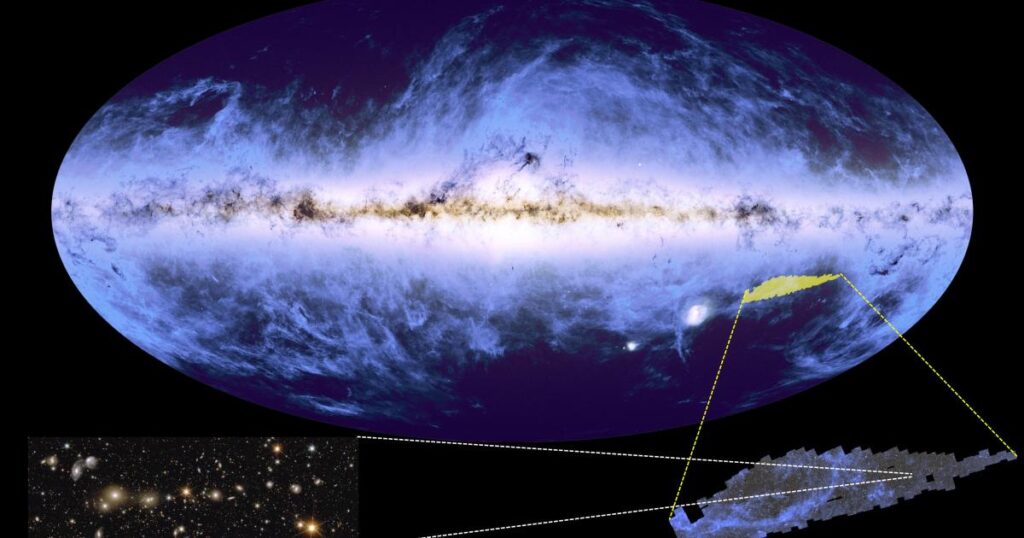Sign up for the Starts With a Bang newsletter
Travel the universe with Dr. Ethan Siegel as he answers the biggest questions of all
Measuring our Universe is challenging from within the Milky Way.
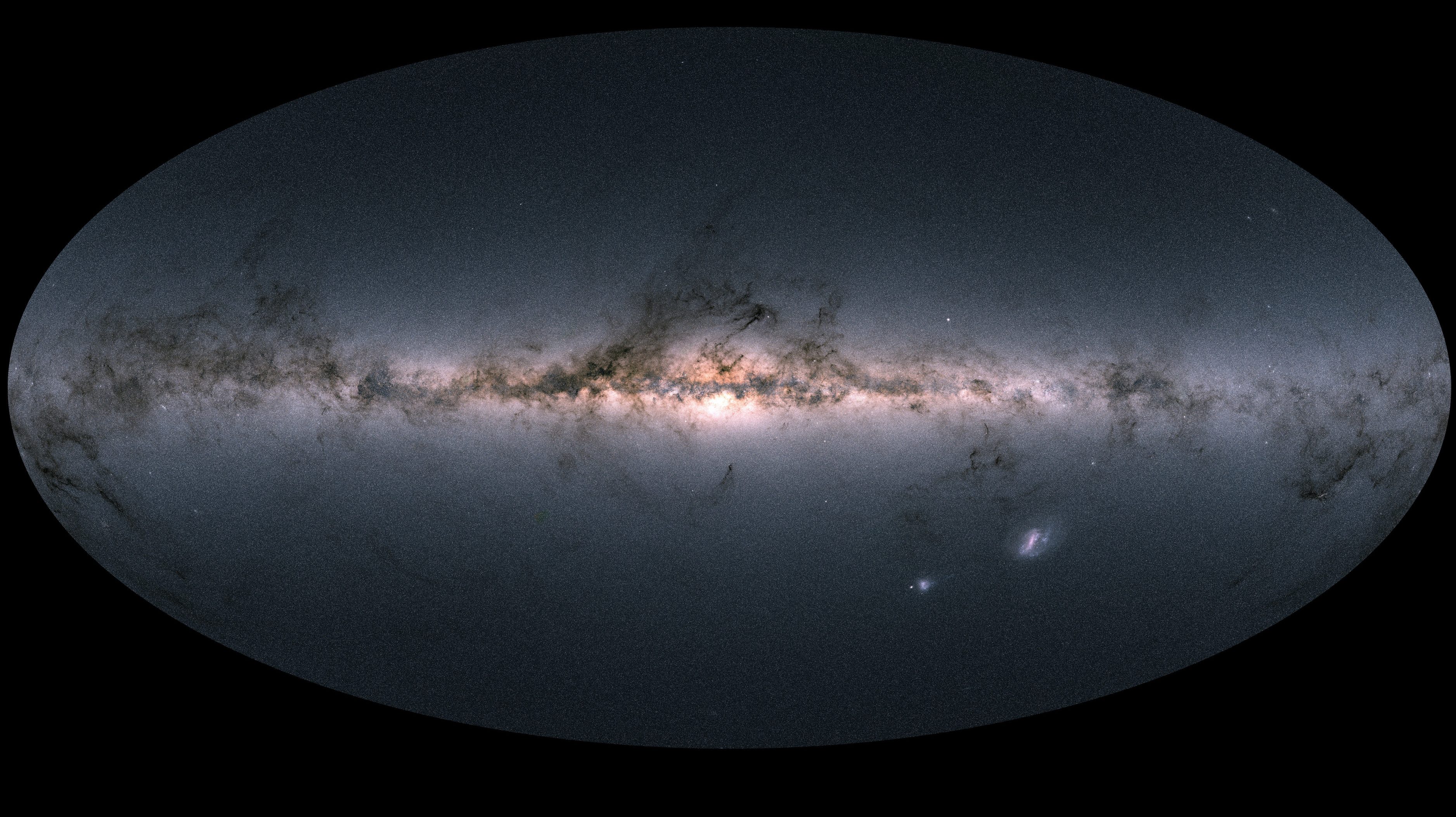
The European Space Agency’s space-based Gaia mission has mapped out the three-dimensional positions and locations of more than one billion stars in our Milky Way galaxy: the most of all-time. Looking toward the center of the Milky Way, Gaia reveals both light-blocking and luminous features that are scientifically and visually fascinating.
Optical measurements pinpoint stars, while longer wavelengths reveal dust.
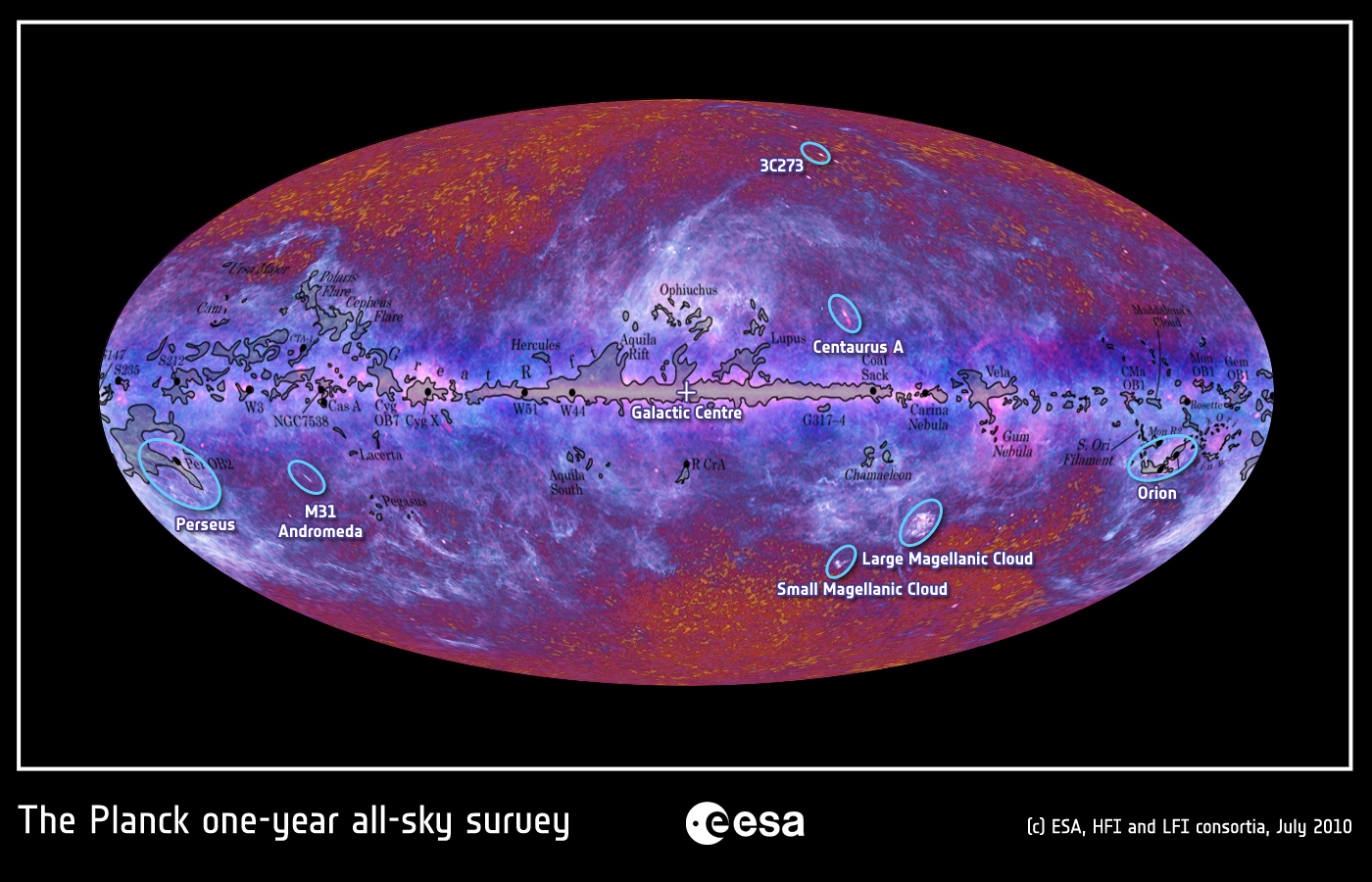
When the entire sky is viewed in a variety of wavelengths, certain sources corresponding to distant objects beyond our galaxy are revealed. This first all-sky map from Planck includes not only the cosmic microwave background, but also extragalactic contributions and the foreground contributions from matter within the Milky Way itself. All of these must be understood to tease out the appropriate temperature and polarization signals.
From space, ESA’s Euclid mission has grander aims.
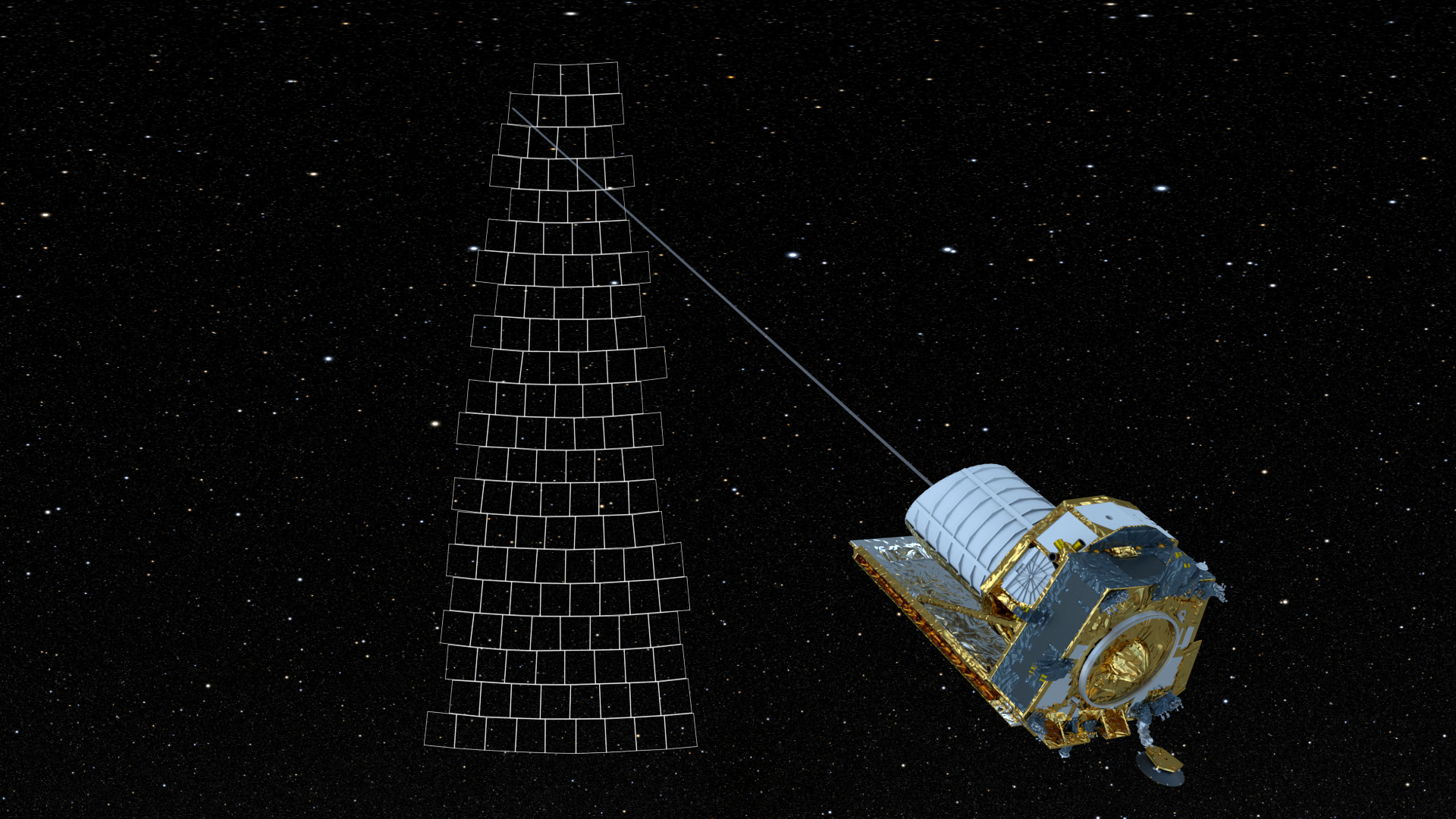
Each time the Euclid telescope points at a region of sky, its VIS and NISP instruments have access to the same half-a-square-degree (0.57 square degrees) so long as Euclid remains pointed there. Once observations are complete, Euclid then “steps” to point at the next, adjacent patch of sky. By performing tens of thousands of these steps, Euclid will build up the largest high-resolution extragalactic catalog in history.
Over six years, total, it will map out huge areas of the entire sky.
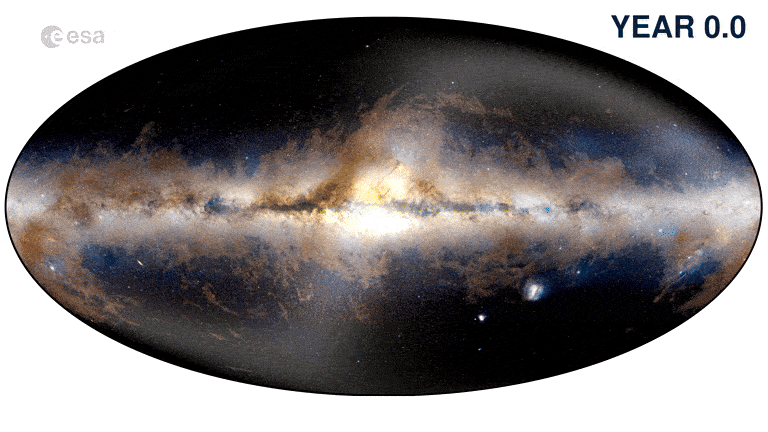
By targeting the most dust-free regions of the sky, the ones least obscured by the foreground material present in the Milky Way, ESA’s Euclid mission seeks to map out an enormous portion of the sky at great depth and at very high resolutions. The science goals are to map out galaxy positions and the effects of mass throughout cosmic history, revealing new information about dark matter and dark energy.
These maps aren’t merely large-area, but also deep and high-resolution.
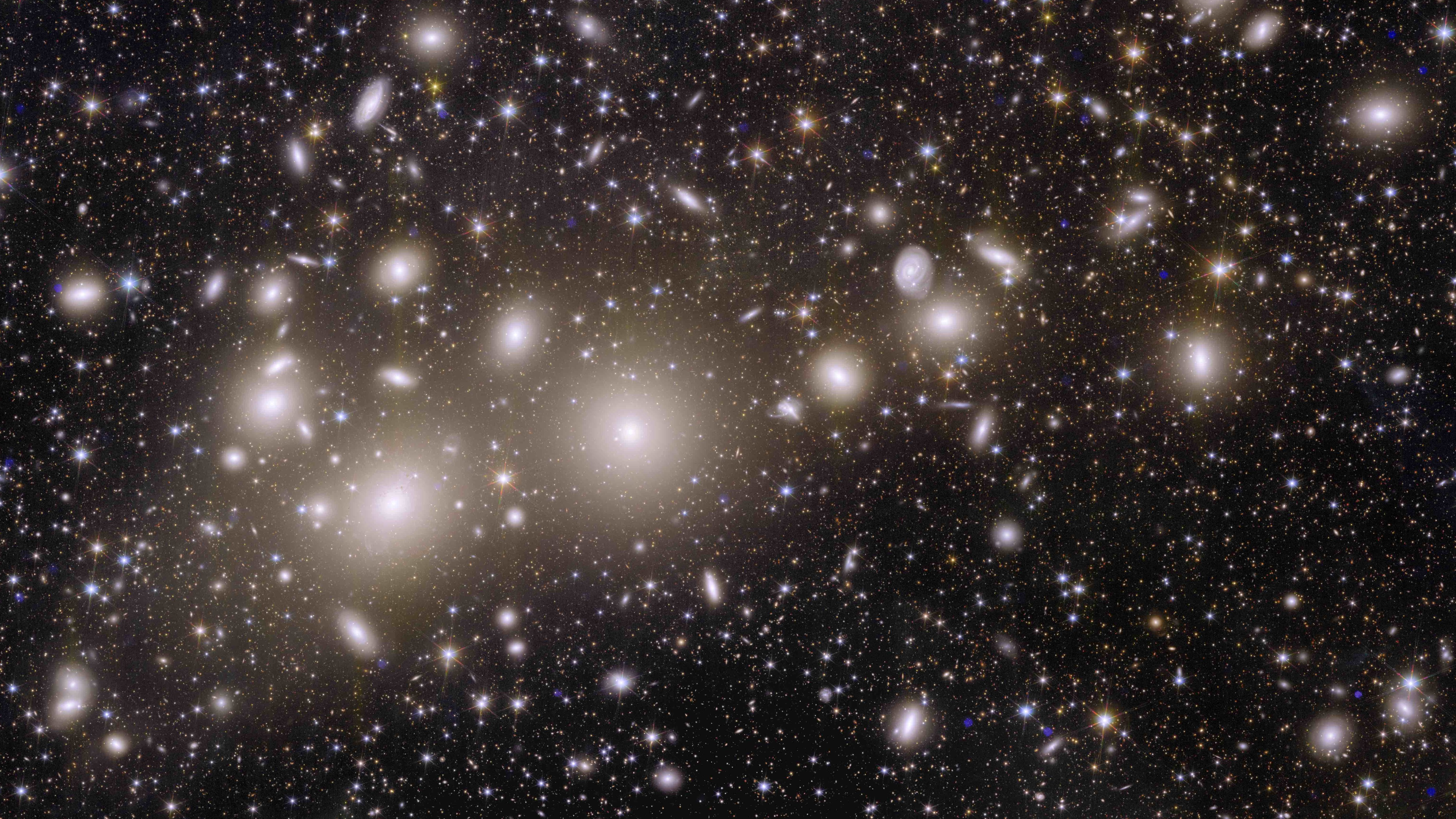
This view of the Perseus cluster of galaxies, from ESA’s Euclid mission, shows over 1000 galaxies all clustered together some 240 million light-years away, with many tens of thousands more identifiable in the background portion of the image. While optically, the image is dominated by the most massive, star-rich galaxies, they are vastly outnumbered by smaller, fainter, low-mass galaxies that are exceedingly difficult to detect, even nearby. Euclid’s capabilities are critical for mapping out the dark Universe.
They include:
- nearby star-forming regions,
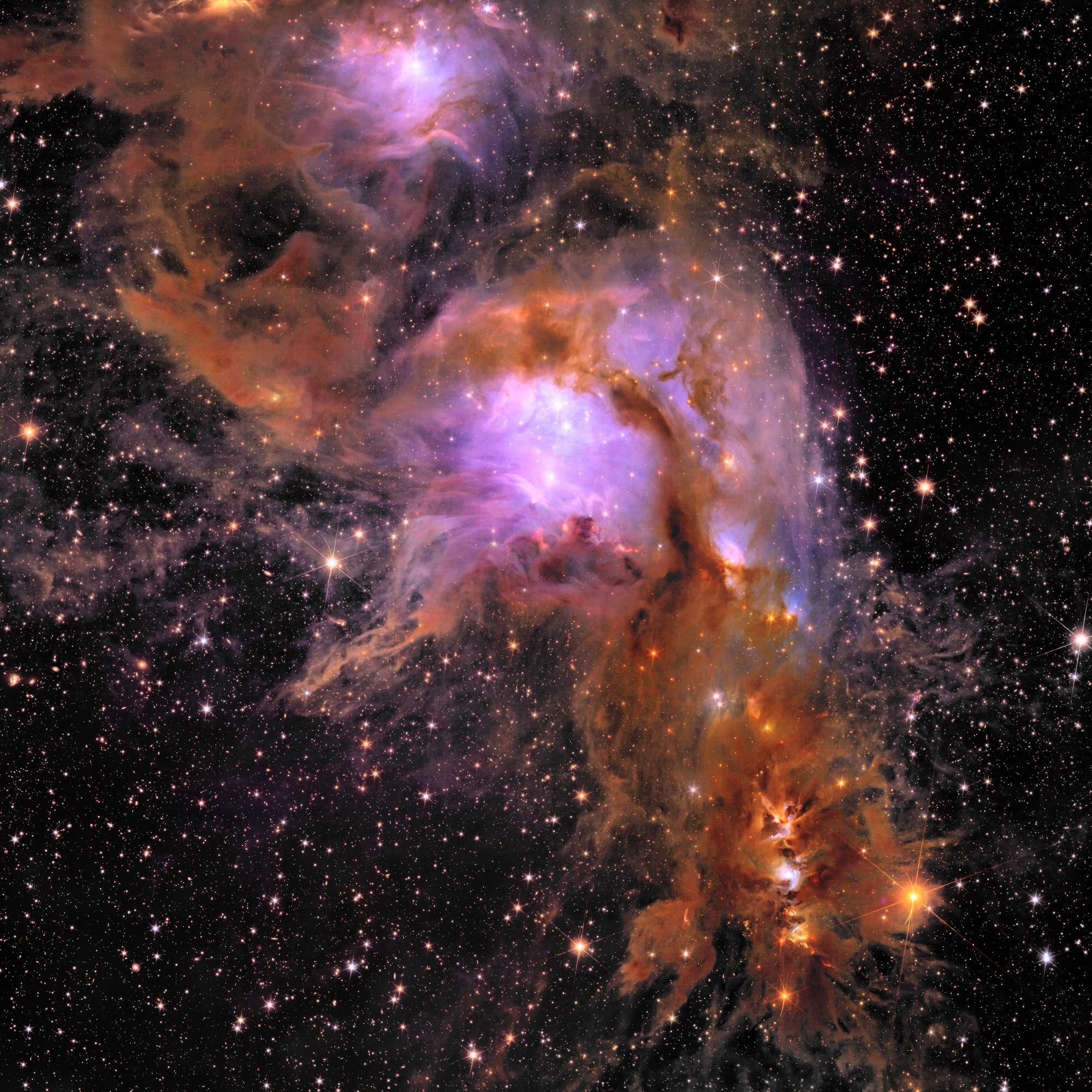
Although star-forming region Messier 78, on the outskirts of the Orion Nebula, is located a mere 1300 light-years away, it was viewed by the ESA’s Euclid mission which revealed the spectacular details seen here. Even though Euclid’s science goals are primarily about galaxies, dark matter, and dark energy, Euclid’s views of even nearby features are extraordinary.
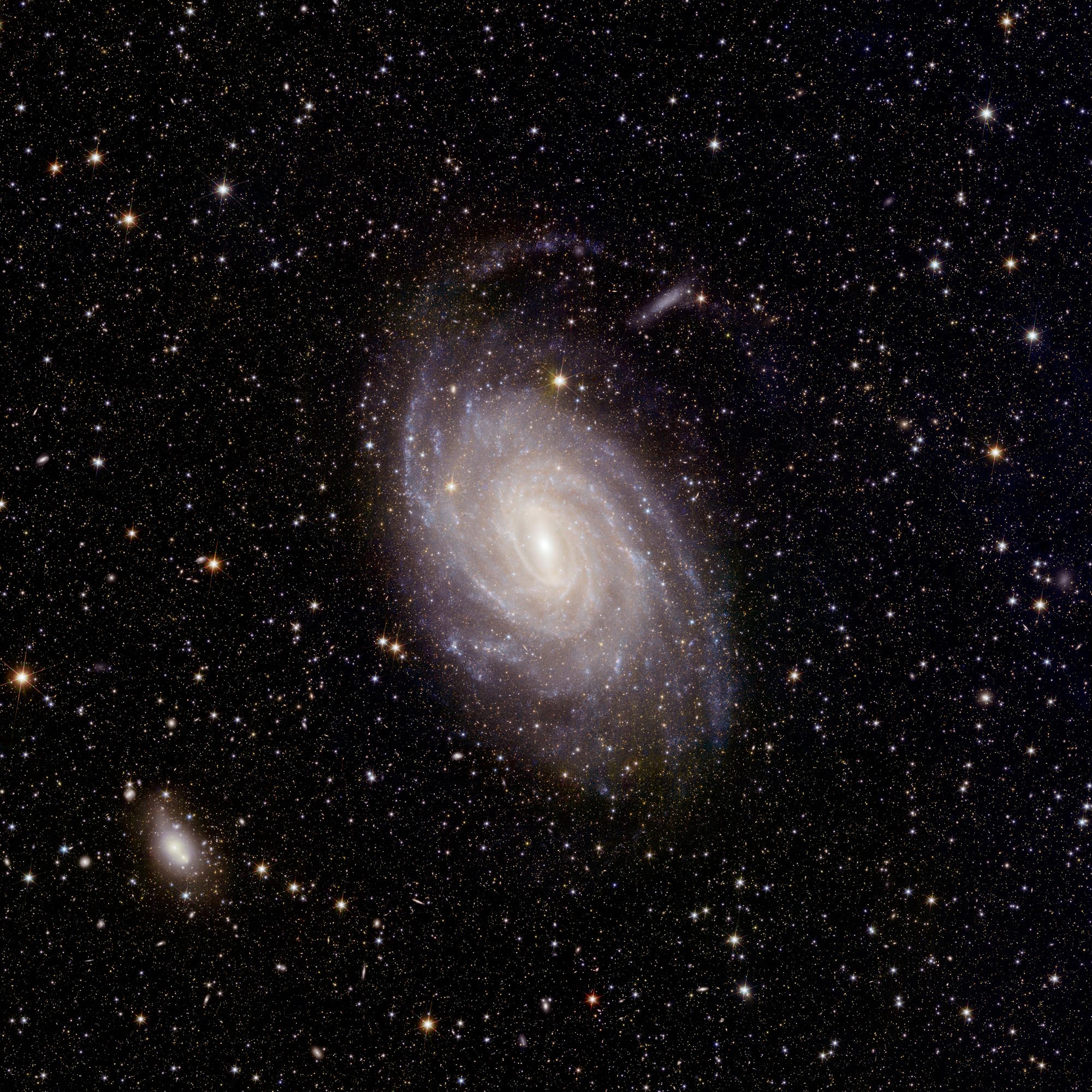
In addition to its detailed maps of total mass, revealing dark matter, and the properties of large-scale clustering that will reveal the properties of dark energy over time, Euclid can also measure properties of star-formation in nearby galaxies, such as within nearby spiral galaxy NGC 6744, shown here.
- detailed features within galaxy groups,
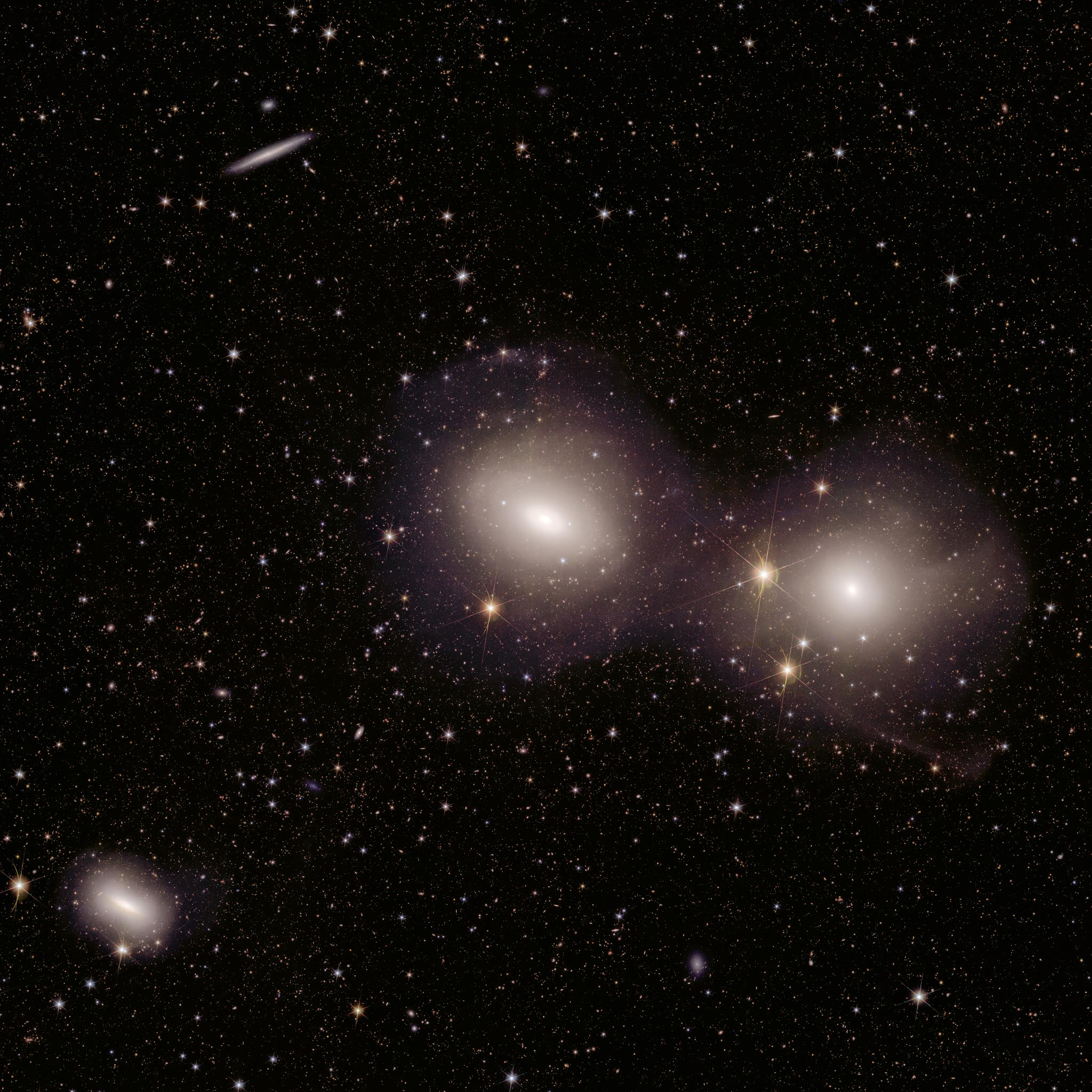
The Dorado group of galaxies is highlighted by two interacting galaxies, whose halos of gas can be seen interacting and forming new stars in this view from ESA’s Euclid mission. Although the science goal of Euclid focuses on the background galaxies shown here, “bonus” science can be gleaned from its spectacular views of these foreground objects.
- relatively nearby galaxy clusters,
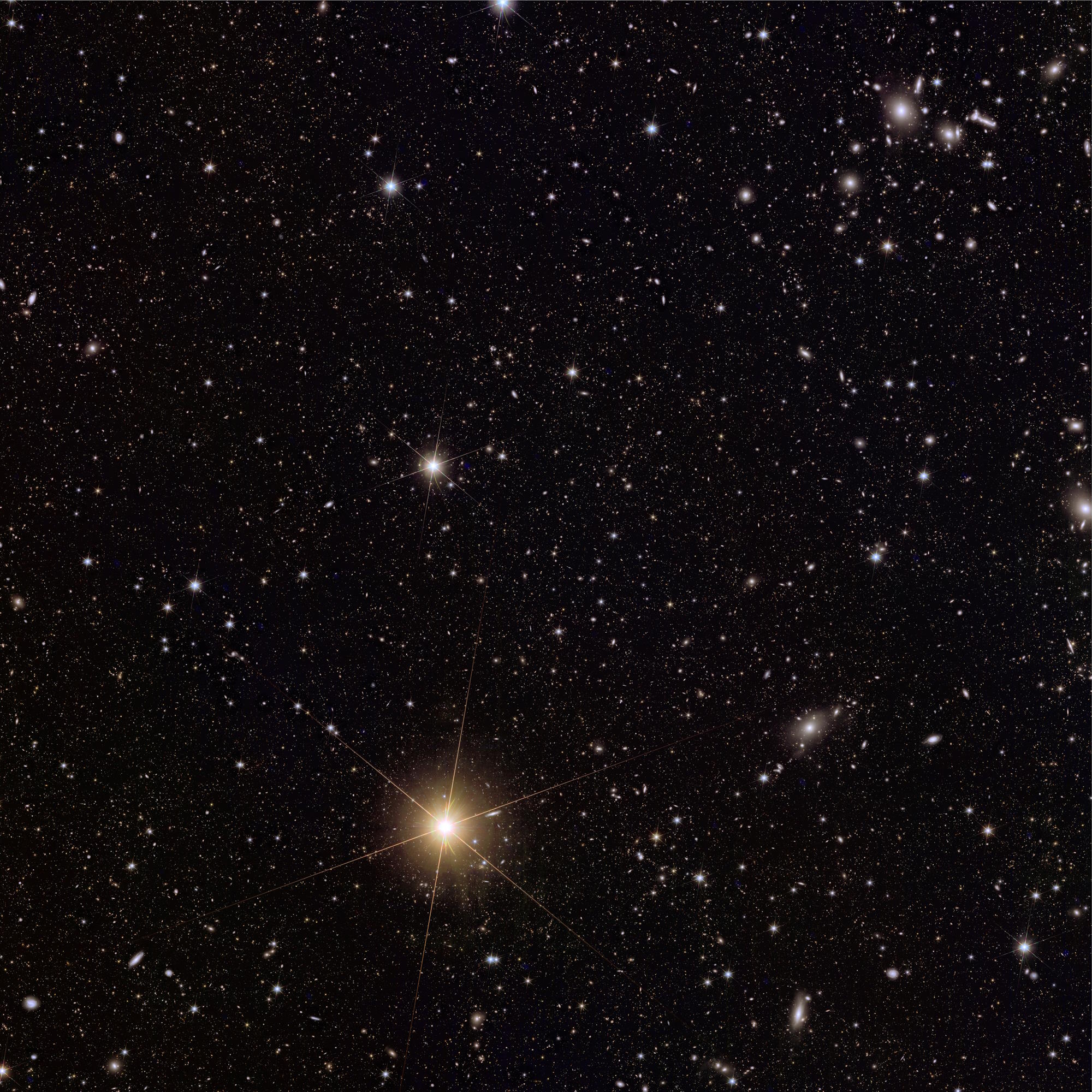
The relatively nearby galaxy cluster Abell 2764, shown at the top right of this Euclid image, contains hundreds of galaxies all clumped together. In the background of the cluster, galaxies whose light is more than 13 billion years old can be revealed by Euclid.
- plus galaxy clusters at great cosmic distances.
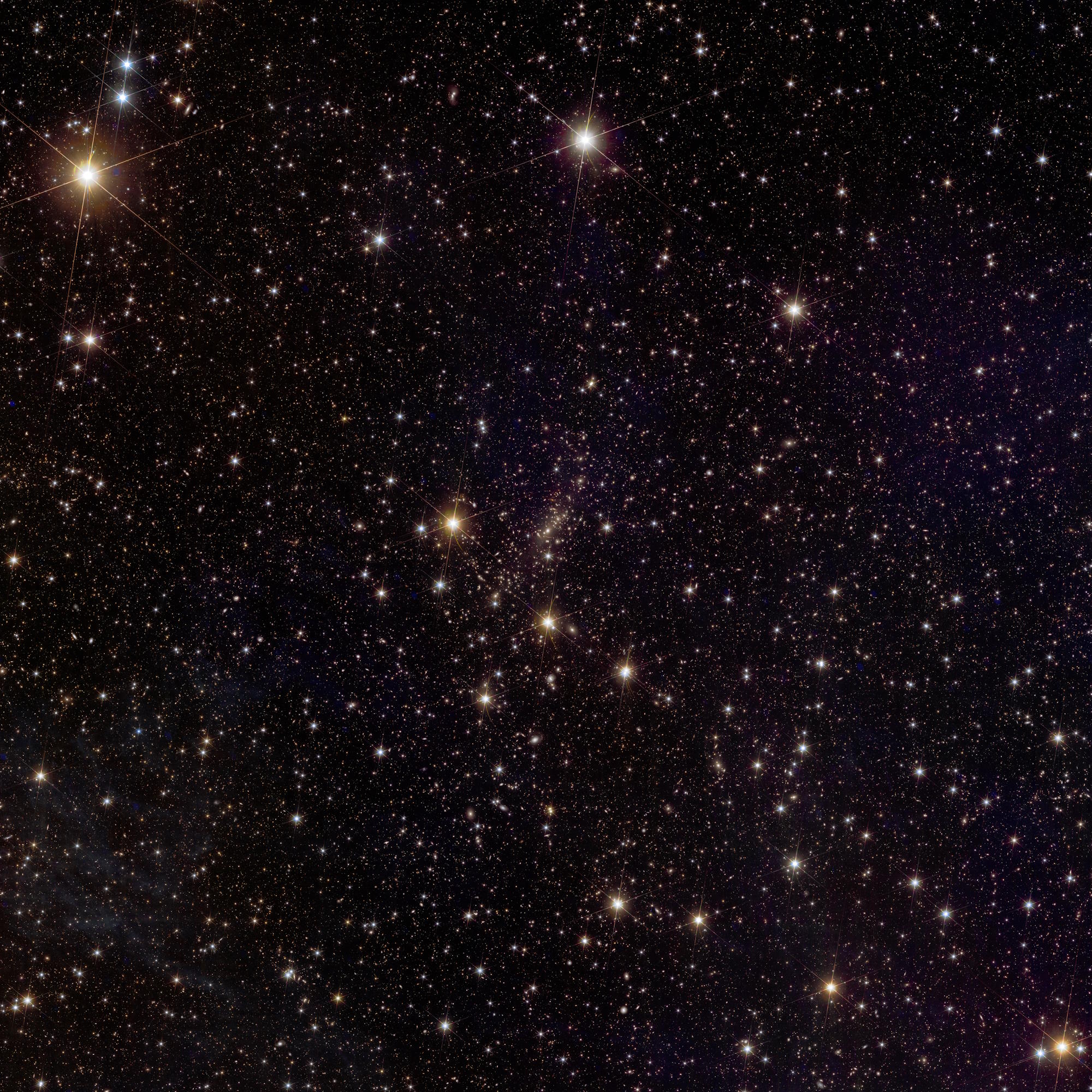
Galaxy cluster Abell 2390, as captured by ESA’s Euclid, is located an incredible 2.7 billion light-years away: so distant that even the largest galaxies within it appear small and faint to Euclid’s eyes. More than 50,000 galaxies are found within this field-of-view, and the effects of gravitational lensing, curving and distorting the light from background objects, are not only visible to the human eye, but can help map out dark matter, providing cosmologically important information to scientists.
By using galaxy correlations as “standard rulers,” Euclid can measure dark energy.
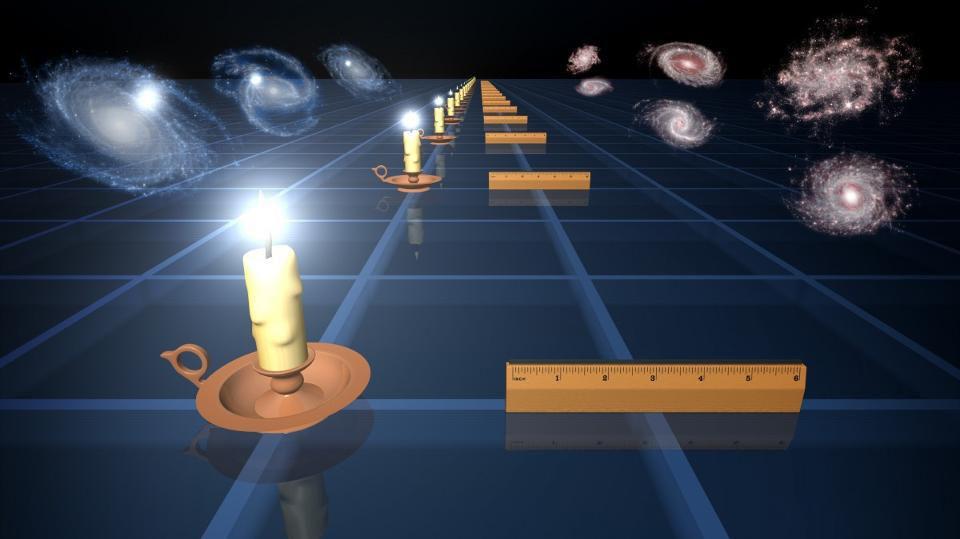
Standard candles (left) and standard rulers (right) are two different techniques astronomers used to measure the expansion of space at various times/distances in the past. Based on how quantities like luminosity or angular size change with distance, we can infer the expansion history of the Universe. Standard candles involve looking at objects whose intrinsic brightness is known at all cosmic distance, while standard rulers involve looking at features such as the average separation distant between any two galaxies (imprinted from baryon acoustic oscillations during the early stages of the Big Bang) that evolves as the Universe expands.
By measuring gravitational lensing throughout cosmic time, it measures dark matter’s effects.

Any configuration of background points of light, whether they be stars, galaxies, or galaxy clusters, will be distorted due to the effects of foreground mass via weak gravitational lensing. Even with random shape noise, the signature is unmistakable. The El Gordo galaxy cluster shows this effect in a remarkably strong fashion, but large-area maps where mass, due to gravitational lensing, can be reconstructed to help understand the properties and distribution of dark matter on cosmic scales.
NASA’s Nancy Roman Telescope and NSF’s Vera Rubin Observatory will have complementary capabilities.
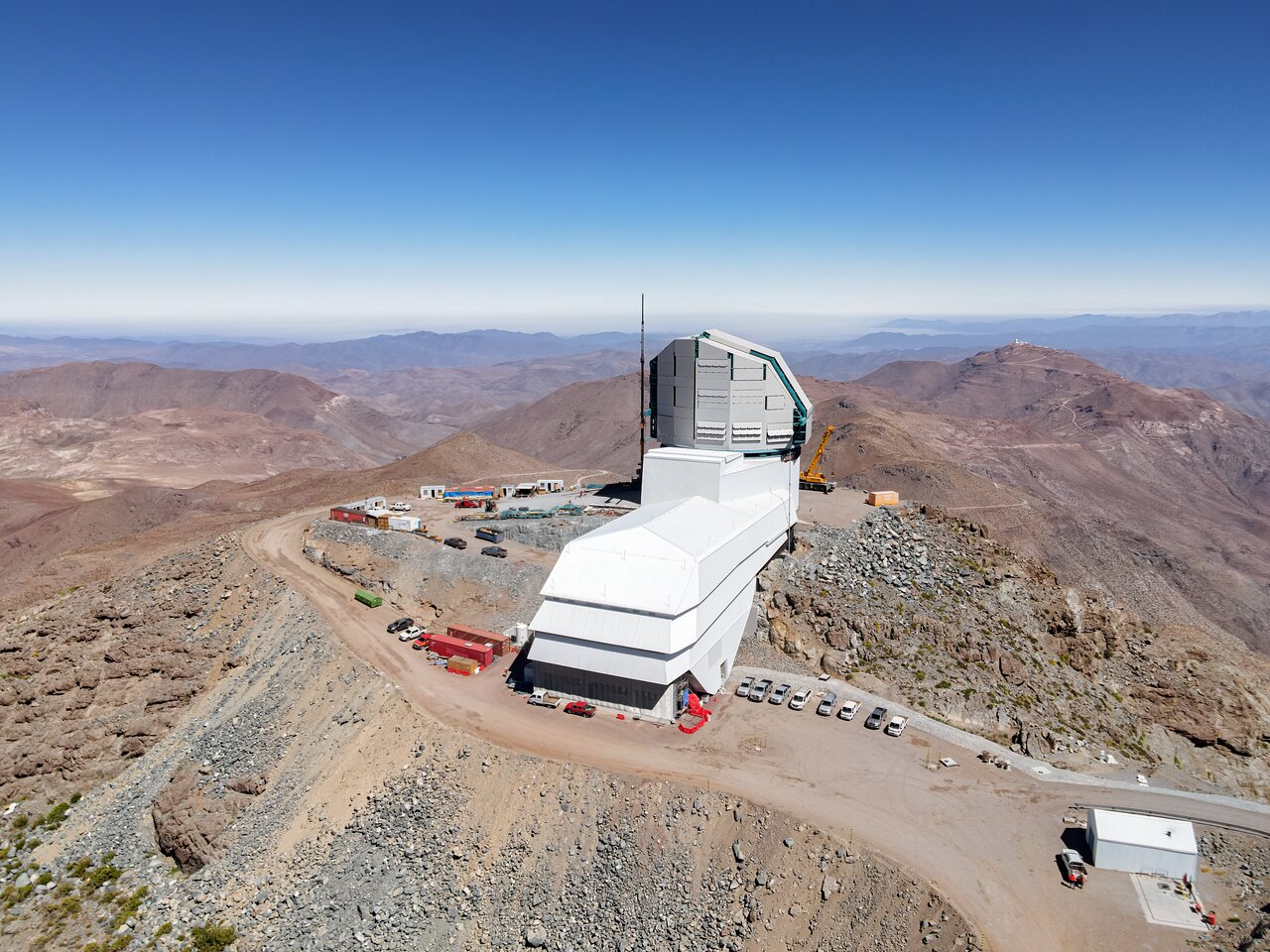
This image shows the Vera C. Rubin Observatory atop Cerro Pachón in Chile, with fairly typical cloud-free conditions accompanying it. When complete, Rubin Observatory will use its 8.4-meter telescope and 3200-megapixel camera to conduct an unprecedented, multi-color, decade-long survey of the optical sky called the Legacy Survey of Space and Time (LSST). The camera will be the largest ever constructed for astronomy, weighing an incredible 2.8 tonnes.
However, ESA’s Euclid mission arrived first, delivering critical data.
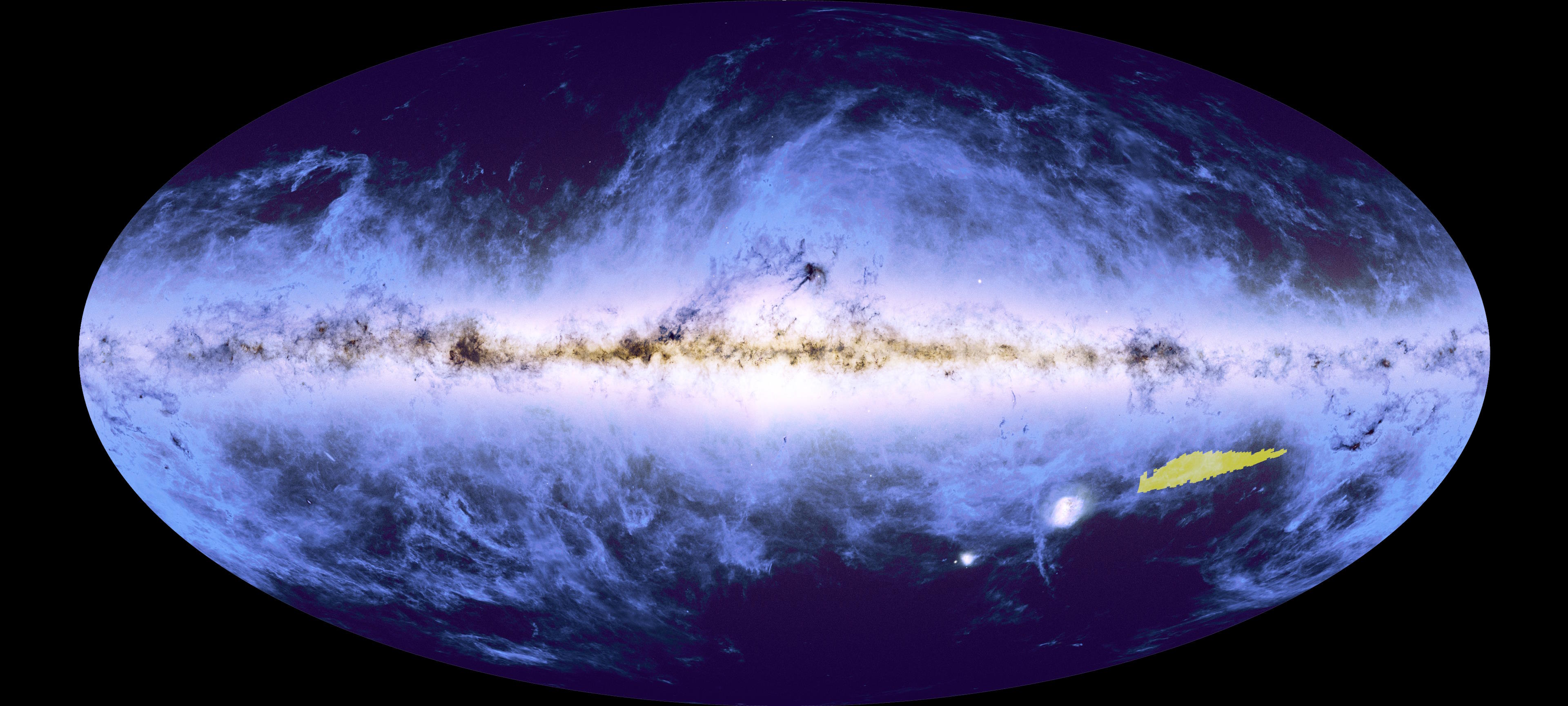
This image shows the combined Gaia and Planck skies, in the background, with Euclid’s first piece of the cosmic map it will eventually construct highlighted in yellow, showcasing the region of space viewed by Euclid in early 2024.
The first 1% of Euclid’s survey has now been released: a whopping 208-gigapixel mosaic.

This full-field view of ESA’s Euclid mission’s first 1% of its eventual total data is a low-resolution display of a full 208-gigapixel (208 billion pixel) image. Dusty features dominate this view, but the true “prize” are the star-forming regions, galaxies, clusters of galaxies and more lying beyond these interloping foregrounds.
Euclid’s outstanding eyes enable unprecedented “zooming in.”

This annotated view of ESA’s Euclid’s first mosaic showcases the scale of the region viewed with several zoom levels shown in the various insets. The size/scale of the full Moon is illustrated at right for comparison. This mosaic was constructed from 260 observations taken between March 25 and April 8, 2024.
A 3x zoom reveals rich star fields.
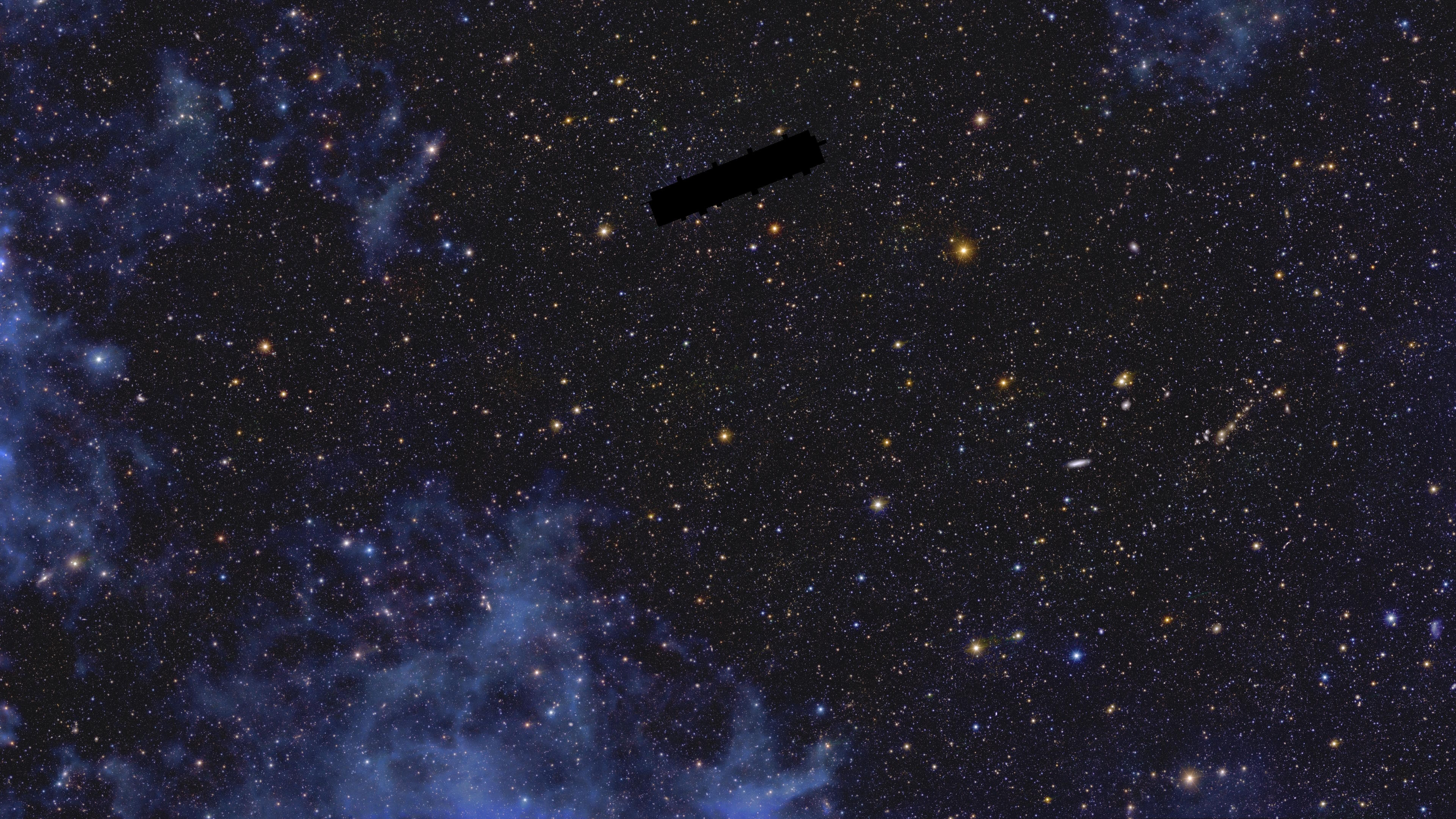
This view represents just a 3x zoom into Euclid’s first mosaic, showing a patch of the southern sky in great detail. Behind the dusty filaments are enormous numbers of stars, galaxies, and galaxy clusters, with Euclid’s incredible eyes revealing clustering properties of the Universe in unprecedented detail.
A 12x zoom showcases prominent galaxies, such as NGC 2188.
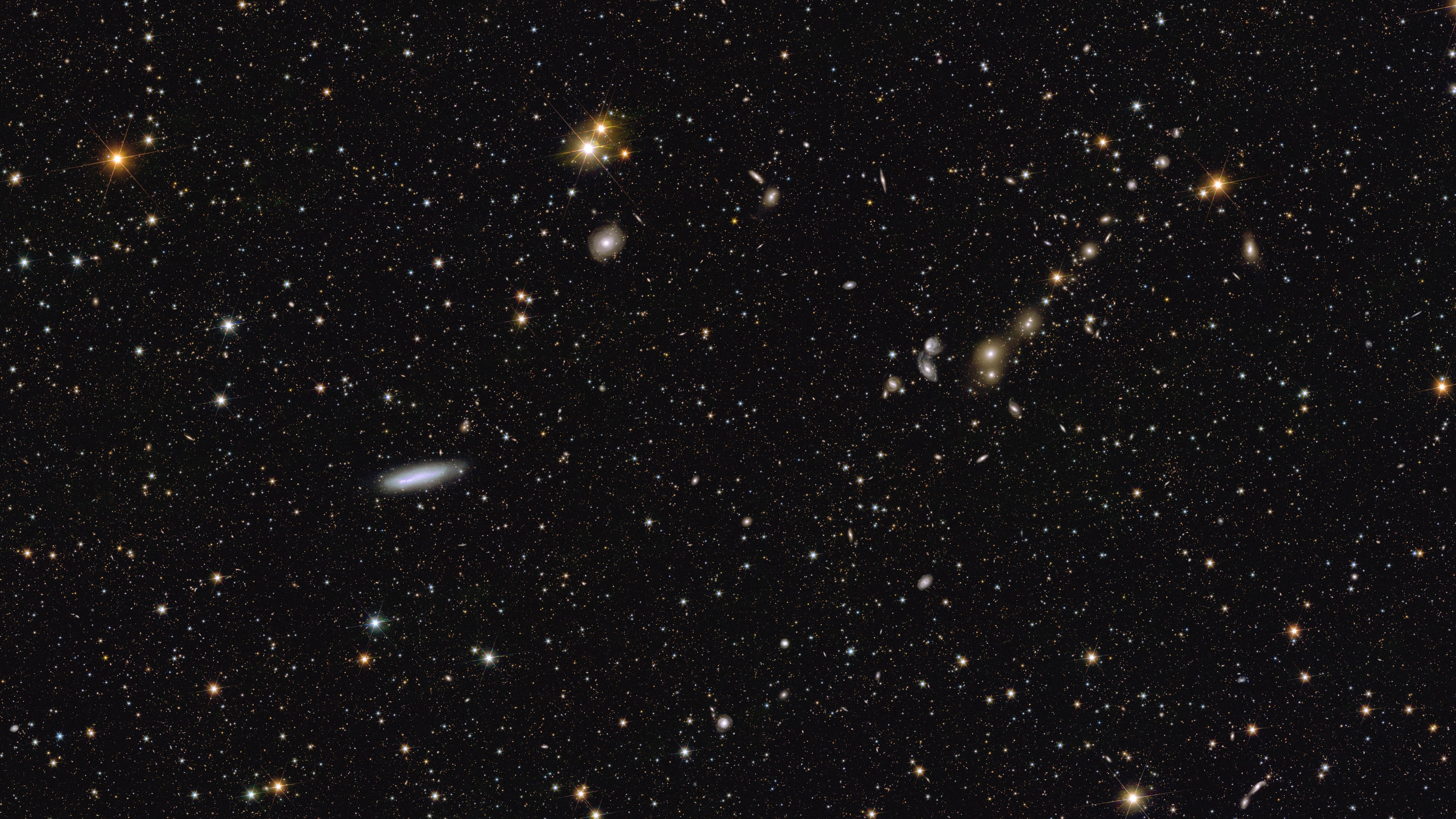
By zooming into Euclid’s first mosaic by a factor of 12x magnification, details such as the bright nearby galaxy NGC 2188 come into focus. Over on the right, the more distant galaxy cluster Abell 3381 appears faintly, but Euclid’s capabilities allow us to view that in great detail at an even higher zoom level.
A 36x zoom reveals rich galaxy clusters, like Abell 3381.
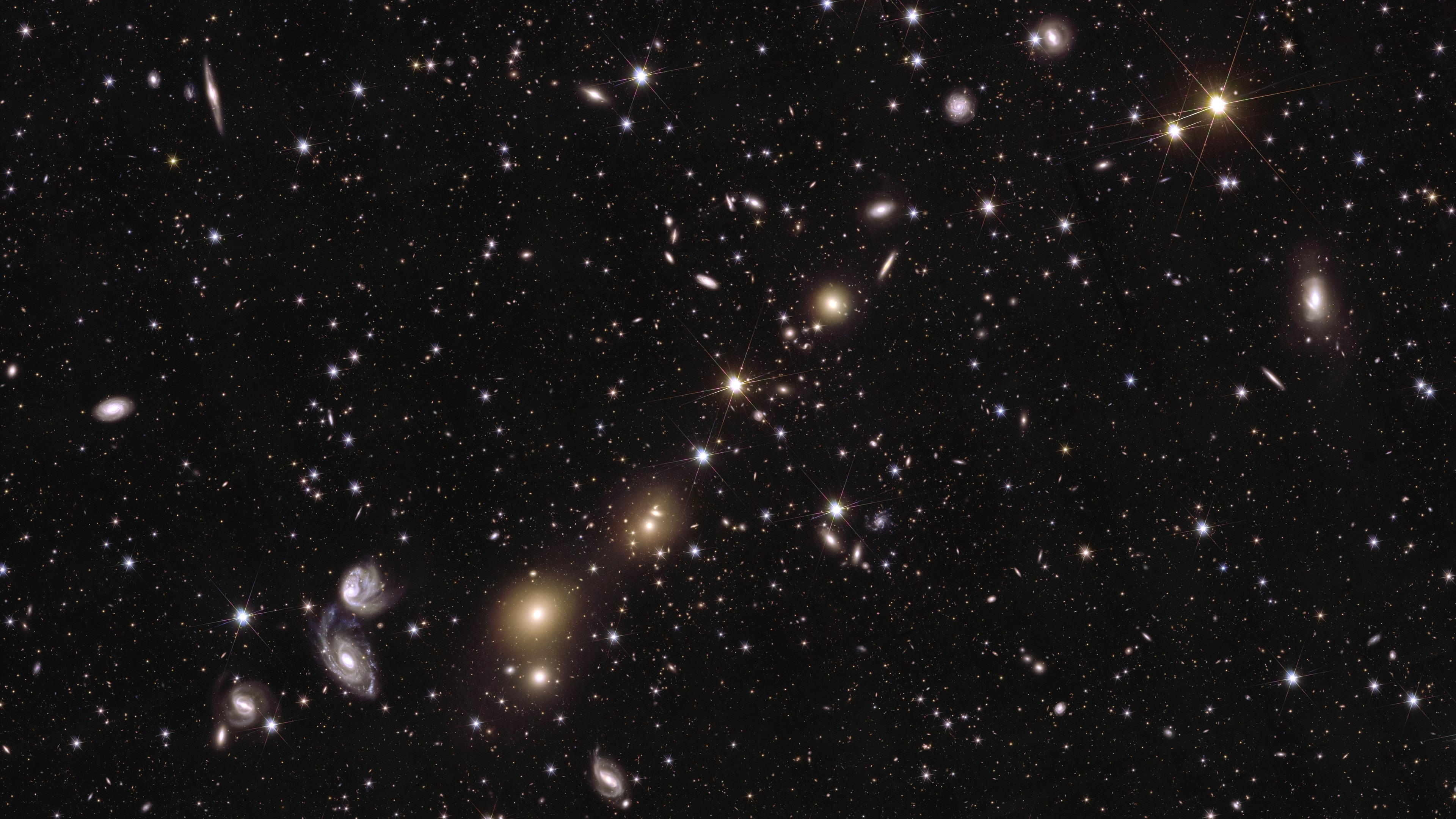
At a level of 36x zoom, Euclid’s first mosaic contains the distant but abundant galaxy cluster Abell 3381, which features a line of bright galaxies similar to Markarian’s chain in the Virgo cluster. Don’t be fooled by the bright, spiky stars; those are merely foreground stars from within our own Milky Way and are not a part of the distant cluster at all.
A 150x zoom unveils individual cluster members,
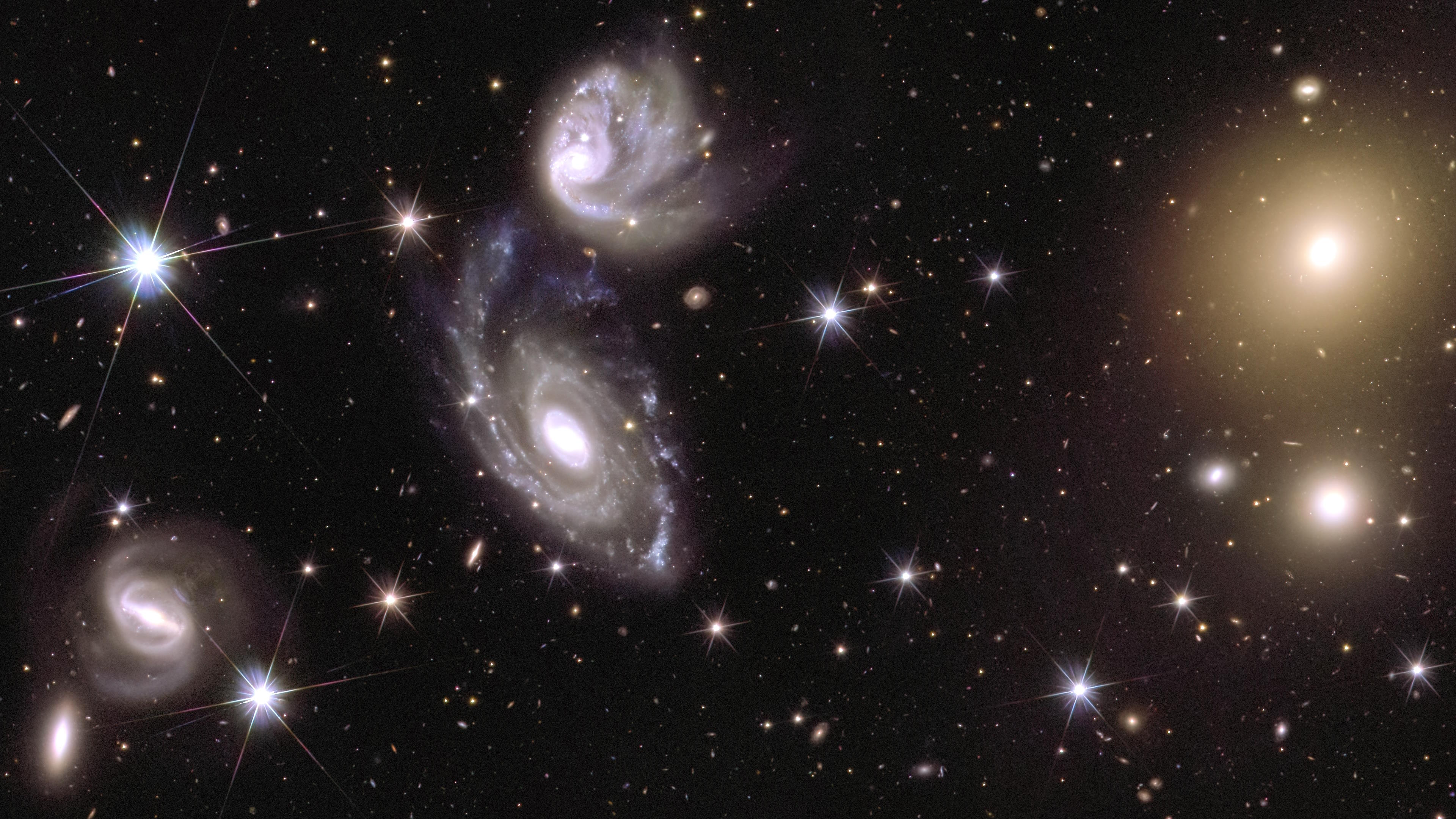
Within ESA’s Euclid’s first released mosaic are enormous numbers of galaxies tightly grouped together. Here, at a 150x zoom level, six prominent, massive, large galaxies are all seen from within Abell 3381, several of which are actively interacting. The extended spiral arms and features of ongoing, new star-formation reveal the nature and properties of these interactions.
while a 600x zoom showcases distant galaxies individually.
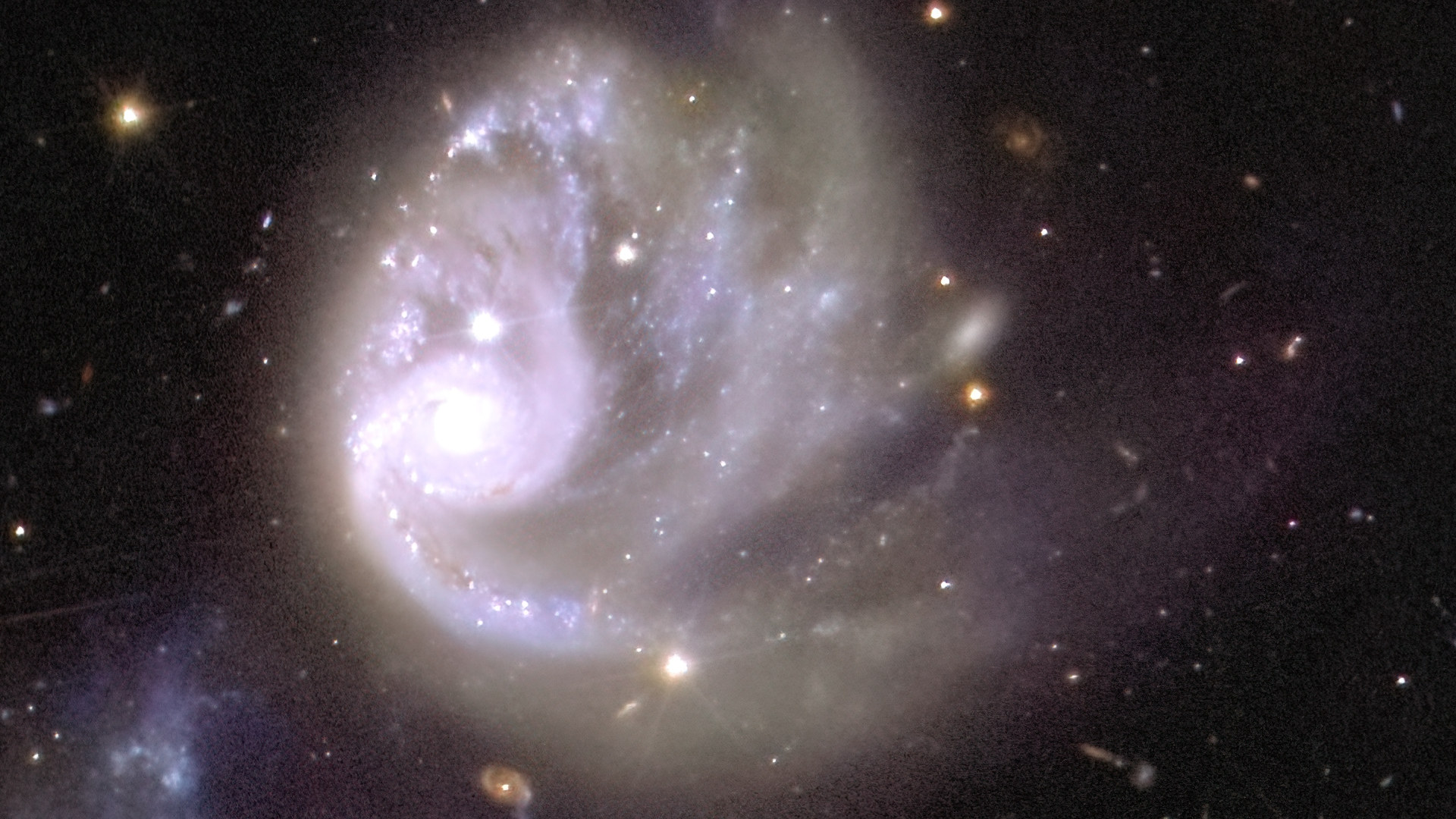
This single swirling spiral galaxy is revealed at a zoom level of 600x from inside ESA’s Euclid’s first mosaic. This individual galaxy is mightily impressive and highlights just how powerful, deep, and high-resolution Euclid’s capabilities are. However, it’s even more distant galaxies, how they’re clustered and how they’re distorted by the cumulative presence of mass along the line-of-sight that are the main science goals of the Euclid mission.
With 99% of its mission remaining, we’ll probe dark matter and dark energy as never before.
Mostly Mute Monday tells an astronomical story in images, visuals, and no more than 200 words.
Sign up for the Starts With a Bang newsletter
Travel the universe with Dr. Ethan Siegel as he answers the biggest questions of all


